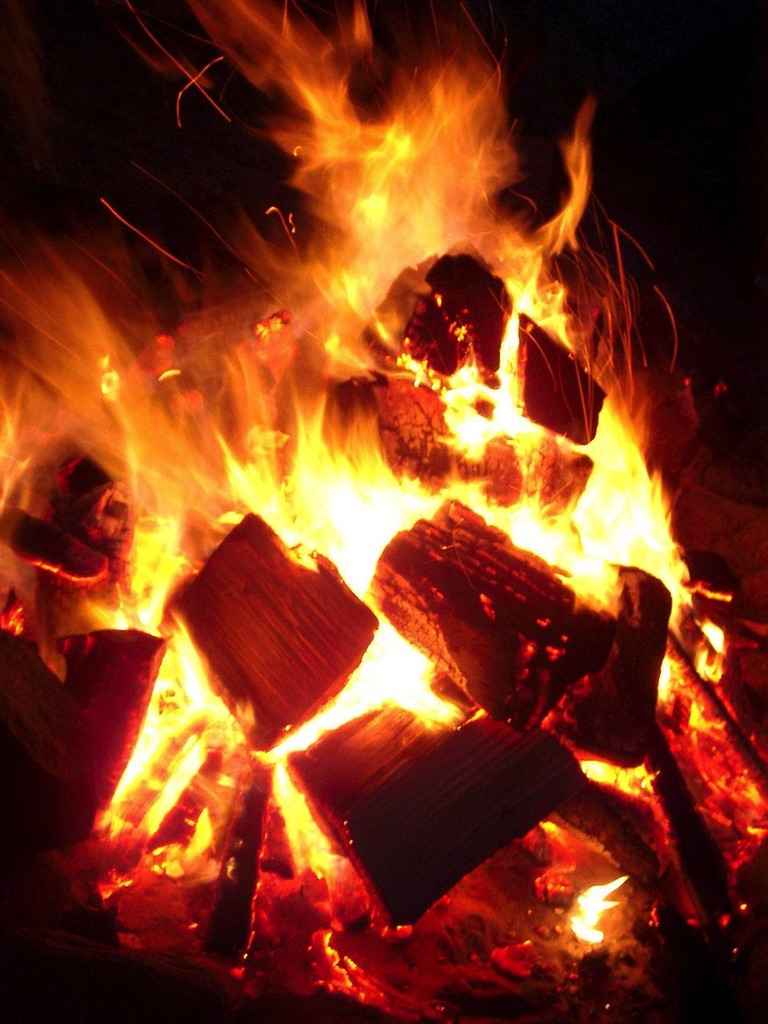Inipi Ceremony: Renewal of Life. Renewal of Breath.

The Inipi ceremony is for the intent of re-remembering, you remembering that you have one life, take care of it. Take care of your life. Cleanse your water. Take care of your water. Every living thing holds sacred water within. When you do this you will have your glow to help those around you.
Remember we are all under one honunpa (sacred pipe). There is no separation in all of creation. Every living thing is a spirit. We as humans hold no greater value over any living breathing thing on this planet. This is to be remembered.
Leave your ego outside. Use this time to get out of your mind and into your heart. This ceremony is for you, the renewal of your breath. Whatever burdens you, whatever troubles are on your heart, whatever prayers you carry, go into this sacred space and give it all to the Tunkasilas, the grandfathers, the sacred rocks, the first creation.
Point your nose to the stars, and with your arms held high, offer up your voice and let the feel good flow through you and rejuvenate your water.
From here, carry your light and your breath into your one, brief life. At this day in time everything is ill, the food, the water, the land, the air. Everything and everyone is in need of our prayers, our faith in the universe to evolve as a two-legged together and help each other
We are one. We must care for each other. That is what we are here to remember.
Some Things to Know When Attending an Inipi Ceremony:
What to do to participate, information to know as far as what to wear, what to bring, and how to come in a good way, and how to do your part as a member of a community. Those who contribute and put their hearts in together will become a Tiyospia. This is the Lakota word for extended family. As with anything in life, understand that the more you put in from your heart and your light, the more you will receive.
There will be a time to start the fire. The fire will be lit about two hours before it is time to go in the Inikaga. It is recommended to show up and help as well as sit and talk and connect with your Tiyospia at this time.
Someone is needed to tend the fire, a firekeeper. Tending fire is a ceremony in itself. This is a position of honor to be respected. A fire keeper is needed at every Inipi ceremony. If there is a man, or men that feel called to this sacred fire and called to be a fire keeper, there is much to learn. Anyone who has held this sacred role, or leads a ceremony will be able to teach in these ways.
What is needed for the sacred fire - Dry wood and river rocks. People will be needed to cut wood, and people will be needed to gather rocks days ahead of time. The man behind the bucket is there to lead ceremony and to teach in these ways, he is not intended to do everything that makes the ceremony possible. Cutting or providing wood and gathering rocks are some ways you can do your part.
There are other ways to do your part- come before the fire is lit to dress (cover) the lodge. You can rake in and around the Inikaga, the fire area, and the area where everyone will sit to talk and share with each other.
*Before and after the ceremony are times to talk and share. Inside during the ceremony is not the time to talk. The man pouring lodge may give a time for everyone to ask for and offer prayers. This is the only time anyone should be talking during ceremony. Each of us is in there to connect with spirit, ourselves and our breaths for our own renewal. Talking during ceremony can cause harm to another. By interjecting you will project your thoughts and mind on someone else. Again, before and after ceremony is the time to share your thoughts and feelings should you choose.
Once the fire is lit women are to be in their skirt. This skirt is to be a long skirt down to your ankles. Women should be in a shirt that covers their shoulders as well. Everyone needs to know that we go in with our feet bare and only a towel(s). Shoes, shiny jewelry like rings, necklaces, earrings glasses etc. are to be left outside. No water bottles inside. Sacred water may be given to drink by the man behind the bucket. This water is medicine; connect with it as you take in. Connect with the steam as you breath it in, this is sacred water in another form.
Songs will be sung. The man pouring will lead in; he will push up the beginning of each song. If you do not know the words, learn them in time. From the beginning use your voice. Offer a sound in song. This is all about intention and contributing with your voice. Keep everything simple. Don’t go into your mind judging yourself or another. Your heart, your light, and your breath are in there to receive renewal. Everyone has their own needs and personal struggles. Allow space for everyone to have their own personal experience.
After each round the door will be opened. It will cool off a bit after the door is opened. Stay in if you can, but if you must get out at any point this is ok. Speak up and the door will be opened to let you out. Do not be embarrassed or push yourself to a point of struggle. Do not feel as though you will disrupt the ceremony in any way. At all times we are to care for our own water first and there will be only support in this, no judgement.
There will be an invitation round, a prayer round, a doctoring round, and a round for giving thanks to spirit for coming into ceremony. Know that during each round, songs are sung in the Lakota language that speaks to spirit about these things. If the feeling of a song resonates with you, try to remember the melody. You can hum that song without knowing what that song was saying. You can carry these songs with you. Ask about them at a learning day and learn these songs for yourself. Learn songs. Singing these songs is very powerful.
As everyone comes out of the lodge you will form a line to your left one by one, and go down the line shaking hands and giving thanks by saying Pilamaya, the Lakota word for thank you.
If spirit bowls/plates have been set out with dried jerk meat, corn, berries, and water, then they will be passed down the line one after the other and each person will take a small bite and pass it on. The last bites will be for the Oglala man who conducted the ceremony. Once he has finished he will wish everyone good dreams. That will be the end of ceremony.
From there he will take time in solitude to do what he needs to do for himself. Ceremony is a lot for him and it is asked that if you have questions, you attend a scheduled learning day in which history, language, songs, prayer ties etc will be discussed. The host will go inside with him for the evening as well, to tend to anything he may need for himself.
Once that has happened, please take time to drink water, sit, lay on the earth, you may use this time to change as well. When you are ready, go from these grounds carrying your renewed breath within you. There is no Lakota word for good-bye. Toksa Ake…see you later, until next time.
What to Bring to an Inipi Ceremony:
-Women need a skirt to wear inside the inikaga. When the fire is lit you need to be in your skirt. Your skirt needs to be ankle length.
-Women need to be in a cotton shirt that covers their shoulders. You may also bring a cotton shawl to cover your shoulders. (your sleeves must still cover your shoulders as well)
-Men will need a pair of shorts to change into before going inside.
-Everyone will need at least one towel to carry in. You can sit on it, wrap yourself in it, use it however you need to.
-A chair or blanket to sit in depending on the weather. There will be space for your chair around the fire.
-A change of clothes. Your clothes will be wet when you crawl out. If you choose to change, a space will be made available.
Some Additional Things to Know:
We circle up and crawl in from the left side. Women go in before men. The elder women go in first, all other women follow and then the men crawl in. Be mindful as you find your place. Take notice of how many people are in ceremony, anyone who may have ailments and need more space etc..
You will see an alter in between the fire and the doorway. Do not walk in between the fire and the doorway. Always walk along the outside of the fire. Do not walk across in front of the door, walk around the fire if you need to get to the other side. We go in on the left side and crawl out to the right. More things like this will be taught at during a learning day.
There are four winds. West, North, East, South. You will hear a song praying to the four winds. You will also see prayer flags hanging from inside the structure, each one representing a different direction/wind, each having their own color.
West (the direction the door will always face) is represented with the color red. The North, black. The East, yellow. The South, white. Grandfather sky is represented with blue and Unci Maka (grandmother Earth,) with green.
These are just a few things to know and much more will come in time. Remember to keep things simple. Our human minds want to over complicate everything. For those who did not grow up in these ways, surrounded by this way of life and this way to pray, learning will take time. Allow space for your process, your understanding to develop as it will.
Spirit knows your heart. Come in a good way, and pray.

0 comments
Leave a comment
Please log in or register to post a comment